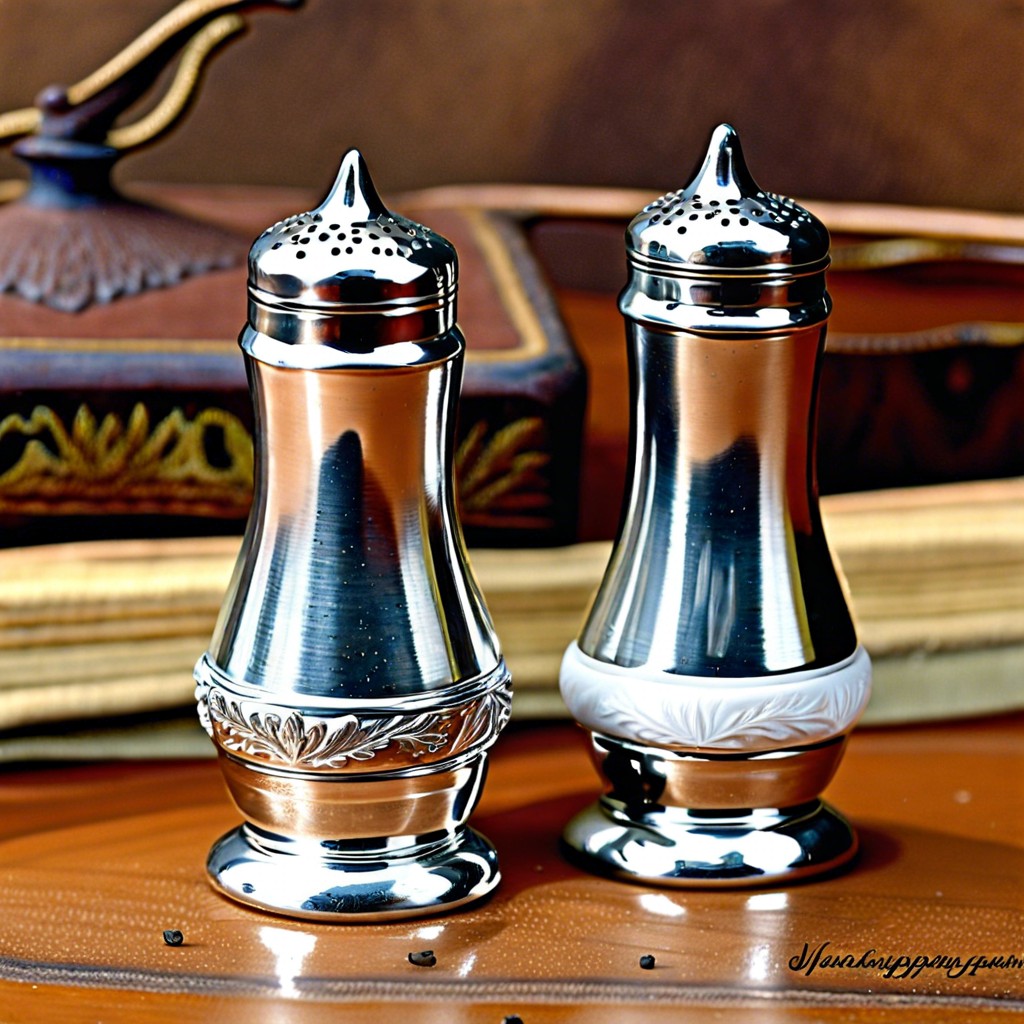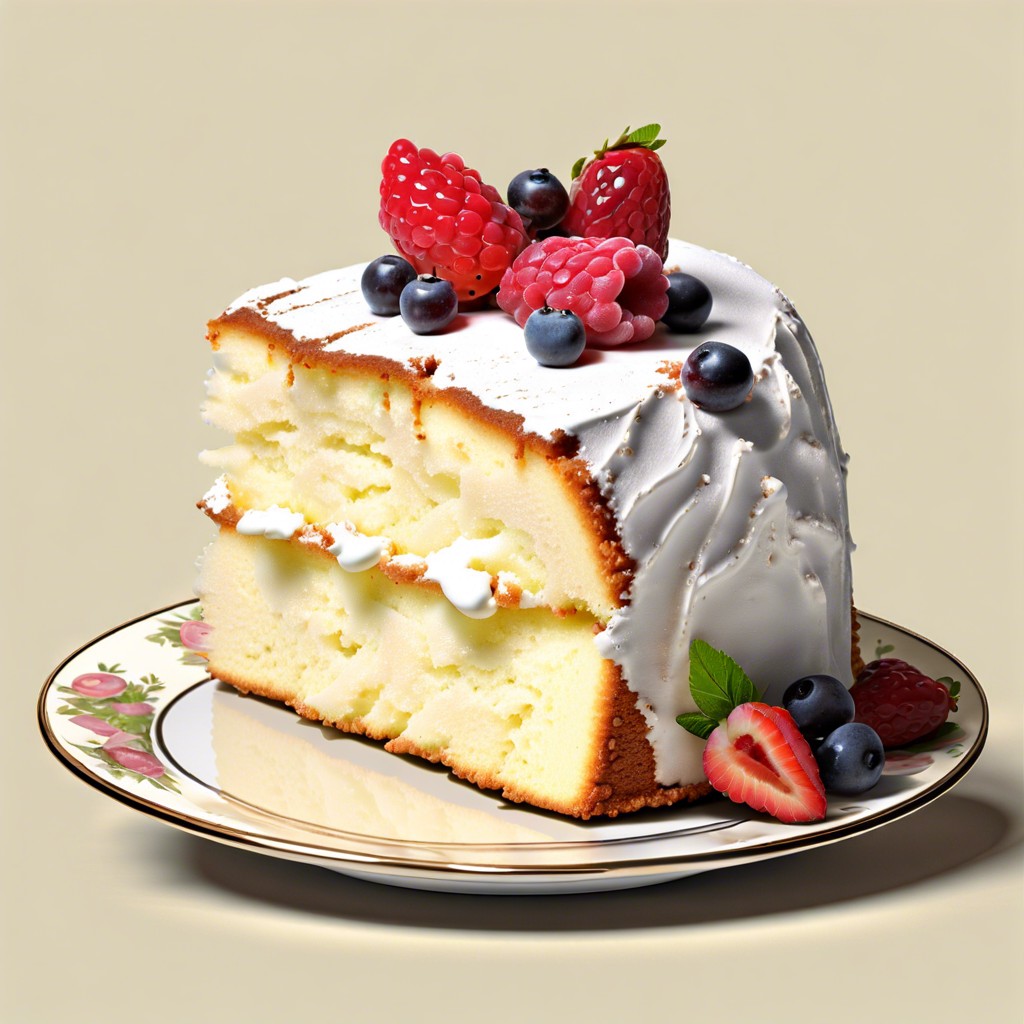Last updated on
Learn how to choose the best vintage salt and pepper shakers for your collection or as a unique gift.
Key takeaways:
- Vintage salt and pepper shakers tell the story of past domestic lives and trends.
- Authenticity can be determined through identifying marks and materials.
- Assessing value involves examining materials, markings, and rarity.
- Start a collection by choosing a theme, educating yourself, and setting a budget.
- Rare finds and notable auction sales can skyrocket in value.
Historical Significance of Vintage Salt and Pepper Shakers

Salt and pepper shakers gained popularity in the 1920s as the American dining culture embraced the notion of shakers as both practical items and decorative accents. Originally, salt was presented in open salt cellars, but humidity issues led to the innovation of shakers. The Great Depression and the subsequent eras saw companies like Shawnee Pottery and Van Tellingen turning these everyday objects into whimsical, colorful pieces that captured the imagination of the middle class. These vintage shakers became symbols of taste and social status, often reflecting the aesthetic movements and technological advancements of their times..Collectors and enthusiasts value these items today not only for their function but also for their ability to tell the story of past domestic lives and trends.
Identifying Marks and Symbols

To spot authentic vintage salt and pepper shakers, familiarize yourself with common manufacturer’s marks. These are typically found on the bottom of each piece and can range from stamped initials to elaborate logos. Popular brands like Shawnee, Goebel, and Lefton have distinct symbols that help confirm the period and authenticity of the shakers.
Another clue lies in the materials used. Older models often feature pre-1960s ceramics, glass, or silver, differing noticeably in texture and weight from modern plastics.
Remember, the presence of a “Made in” label followed by a country name often suggests a post-1950s production date, aiding collectors in pinpointing the era more accurately.
Determining Value and Authenticity
Assessing the value and authenticity of vintage salt and pepper shakers involves a keen eye and a bit of detective work. Start by inspecting the materials. Genuine pieces from the early to mid-20th century often feature specific types of ceramics, glass, or metals. Age signs, like patina on metal or slight crazing on ceramics, can be indicators of authenticity but require verification, as reproductions might artificially simulate wear.
Next, examine markings. Manufacturers’ marks, located typically on the base, can be crucial clues. Research these symbols online or in collector’s guides to understand their origins and time periods.
Consider also the design and production rarity. Limited edition releases or shakers produced by renowned companies usually fetch higher prices. Rarity increases value—shakers that are part of a limited series or those that were discontinued early in their production can be particularly valuable.
Lastly, consult with experts or use reputable online forums. These resources offer invaluable insights and can help confirm the authenticity and estimated value of your finds, saving you from potential pitfalls in the collecting process. Engaging with a community also keeps the adventure of collecting lively and informative.
Collecting Strategies
Starting a collection can seem like a puzzle, especially with something as seemingly small-scale as salt and pepper shakers. However, focusing can turn this into a fascinating hobby. Here’s how:
Choose a theme that resonates with you. This could be based on material (ceramic, glass, metal), era (Victorian, mid-century modern), or even novelty designs (animals, holiday themes). Sticking to a theme can make your collection more cohesive and visually appealing.
Educate yourself on what you’re collecting. Dive into books, online forums, and engage with other collectors. Understanding the historical context and variations in design of salt and pepper shakers enhances your knowledge and guides more informed purchases.
Establish a budget. Vintage collectibles can vary widely in price. Determine what you’re willing to spend to avoid impulsive decisions that may not fit the scope or quality of your collection.
Attend estate sales, thrift stores, and auctions. These venues often offer unexpected treasures at reasonable prices. It’s a great way to obtain pieces that may be rare or underappreciated by general consumers.
Maintain and organize your collection with care. Proper display and storage prevent damage and keep your items in good condition, which can be crucial for maintaining their value and aesthetic appeal.
Remember, collecting should be enjoyable, not stressful. Take your time to build a collection that brings you joy and pride.
Rare Finds and Notable Auction Sales
Some shakers capture the imagination with their unusual designs and historical context, skyrocketing their value at auctions. For instance, a pair from the 1950s, shaped like Elvis Presley, sold for over a thousand dollars due to its rarity and excellent condition.
Collectors often keep a lookout for sets from renowned manufacturers like Shawnee Pottery in the U.S. or novelty items from Japan, which dominated the market in the post-war era. These pieces can fetch premiums, especially if they still have their original packaging.
Highlight stories from auctions can inspire new collectors. For example, a rare set of ceramic Christmas-themed shakers once owned by a famous personality from the 1960s was found at a small estate sale and later auctioned for a hefty sum. This demonstrates the unexpected treasure and excitement the hobby can bring.
Understanding trends in the market is crucial, such as the recent surge in demand for Art Deco pieces, influencing collectors to reassess their inventory and potentially release valuable items into the auction circuit, sparking bidding wars.
Lastly, online auction platforms have made it easier for collectors worldwide to participate, often leading to exciting last-minute upsets in prices and the discovery of previously unnoticed gems, enriching the collector’s experience and understanding of market dynamics.




